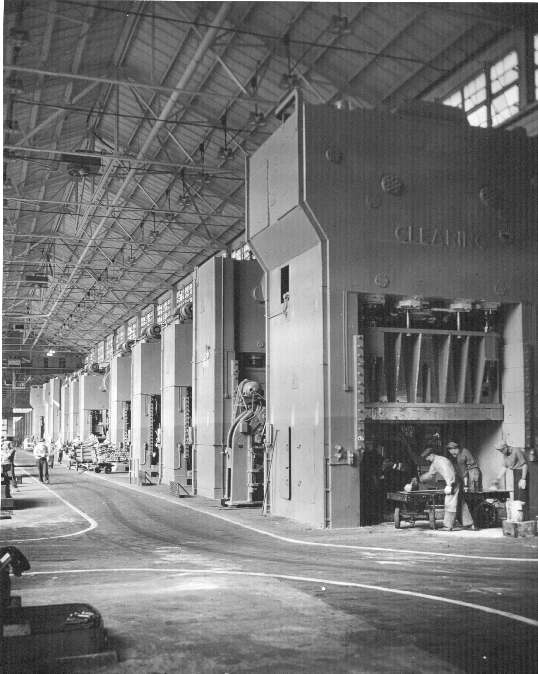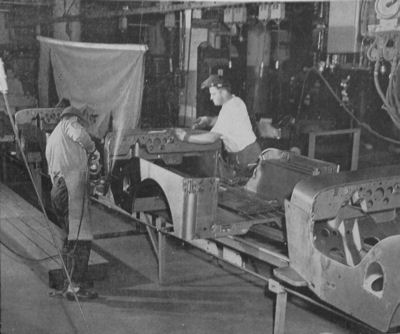Universal Civilian Jeep (CJ-2A)
As World War II was coming to a close Willys was making plans for post war sales of the Jeep. In August, 1944 a contract was signed with American Central Manufacturing (ACM) for the manufacture of 25,000 civilian Jeep bodies through 1948. (1) Production was to start as soon as "the War Production Board releases the necessary material allocations". (2) American Central Manufacturing, located in Connersville, Indiana, had already been producing military jeep bodies throughout the war for MB and GPW models. ACM also made metal bodies for other automakers as well as kitchen cabinets and appliances. Cabinets, refrigerators and Jeeps had much in common, as they were all square and didn't require complex curves and angles. Civilian Jeep body production must have started in the spring of 1945 since the first CJ-2A was produced on 6/16/45. (2) When ACM manufactured a body they stamped a serial number in the driver's side toeboard gusset and on the tailgate. The body was then painted and shipped by rail to Willys-Overland in Toledo, Ohio. Willys installed a Body serial number tag on each body, possibly for parts inventory or accounting reasons. The ACM serial numbers numbers are about 10,000 lower than the Willys Body serial numbers. Also installed on each Jeep was a vehicle serial number plate, or patent plate. As sales of Jeeps increased Willys made plans to build their own bodies in Toledo, instead of using outside suppliers. In July, 1946 construction began on a $5 million stamping shop to house 53 presses for body manufacturing. (2)

Willys-Overland
press room photo
from Toledo Lucas County Public Library, Images in Time collection
